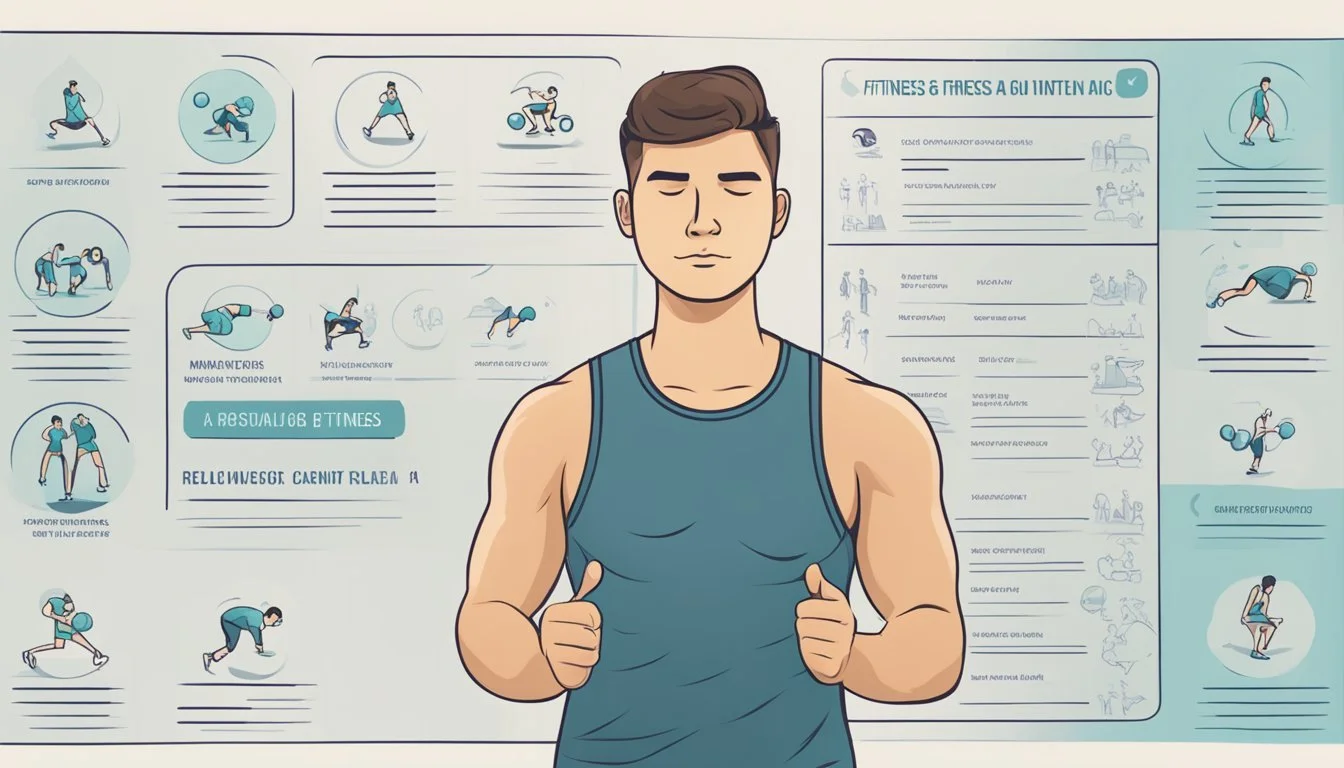11 Strategies for Managing BPD-Related Anger
Effective Techniques for Emotional Regulation
Borderline Personality Disorder (BPD) often involves intense emotional experiences, including episodes of anger that can be challenging to manage. These anger outbursts, sometimes referred to as "borderline rage," can strain relationships and impact daily functioning. Understanding and addressing BPD-related anger is crucial for individuals with the condition and those close to them.
Effective strategies for managing BPD-related anger can help individuals regain control and improve their quality of life. By learning to recognize triggers, implement coping techniques, and develop healthier emotional responses, people with BPD can reduce the frequency and intensity of anger episodes. This article explores 11 practical approaches to help navigate and mitigate BPD-related anger, offering support for those seeking to better manage their emotions.
1) Practice Mindfulness Meditation
Mindfulness meditation can be a powerful tool for managing BPD-related anger. This practice involves focusing on the present moment and observing thoughts and feelings without judgment.
Regular mindfulness meditation helps individuals with BPD recognize anger as it arises. By noticing early signs of anger, they can respond more effectively before emotions escalate.
Mindfulness strengthens emotional regulation skills. It allows people to observe their anger without getting caught up in it, creating space between the emotion and their reaction.
This practice also enhances self-awareness. Individuals can better understand their anger triggers and patterns, leading to improved self-management strategies.
Mindfulness meditation can reduce overall stress levels. Lower stress often translates to fewer anger outbursts and more stable moods for those with BPD.
Starting with short, guided meditations can help build a consistent practice. Over time, individuals may find it easier to apply mindfulness techniques in daily life, especially during challenging moments.
2) Use Distraction Techniques
Distraction techniques can be valuable tools for managing BPD-related anger. These methods help redirect attention away from intense emotions and provide a mental break.
One effective distraction technique is engaging in a favorite hobby or activity. This could involve reading a book, solving puzzles, or working on an art project.
Physical activities like going for a walk, practicing yoga, or dancing can also serve as powerful distractions. These exercises release endorphins and help reduce stress levels.
Listening to music or podcasts can transport the mind to a different place, offering a temporary escape from anger-inducing thoughts. Creating a playlist of calming or uplifting songs can be particularly helpful.
Mindfulness exercises, such as focusing on breathing or observing surroundings, can effectively shift attention away from anger. These practices promote a sense of calm and present-moment awareness.
Engaging in conversation with a trusted friend or family member can provide a welcome distraction. Discussing neutral topics or seeking support can help refocus the mind.
3) Engage in Regular Exercise
Physical activity serves as a powerful tool for managing BPD-related anger. Exercise releases endorphins, which can help improve mood and reduce stress levels.
Aerobic exercises like running, swimming, or cycling are particularly effective in burning off excess energy and tension. These activities can provide a healthy outlet for intense emotions.
Strength training and yoga can also be beneficial. They promote body awareness and mindfulness, helping individuals with BPD stay grounded in the present moment.
Engaging in team sports or group fitness classes offers the added benefit of social interaction. This can help build interpersonal skills and provide a sense of community support.
Consistency is key when incorporating exercise into anger management strategies. Aim for at least 30 minutes of moderate physical activity most days of the week.
It's important to choose activities that are enjoyable and sustainable. This increases the likelihood of maintaining a regular exercise routine long-term.
Remember to consult with a healthcare provider before starting any new exercise program, especially if there are underlying health concerns.
4) Explore Dialectical Behavior Therapy (DBT)
Dialectical Behavior Therapy (DBT) is a proven approach for managing intense emotions, including anger associated with Borderline Personality Disorder (BPD). This therapy focuses on teaching practical skills to regulate emotions and cope with challenging situations.
DBT incorporates mindfulness techniques to help individuals become more aware of their emotional states. By practicing mindfulness, people can learn to observe their anger without immediately reacting to it.
The therapy also emphasizes developing emotional regulation skills. These skills enable individuals to identify and understand their anger triggers, as well as implement effective strategies to manage their responses.
DBT typically involves both individual and group therapy sessions. During these sessions, therapists encourage a non-judgmental attitude and promote acceptance and compassion.
Through DBT, individuals learn to balance acceptance of their current emotional state with the desire for change. This dialectical approach helps reduce the intensity of anger and promotes more balanced emotional responses.
By consistently applying DBT techniques, many people with BPD experience significant improvements in their ability to manage anger and maintain healthier relationships.
5) Establish Boundaries
Setting clear boundaries is crucial when managing BPD-related anger. Individuals with BPD may struggle with personal limits, making it essential for those around them to establish and maintain firm boundaries.
Communicate expectations clearly and calmly. Use "I" statements to express how specific behaviors impact you personally. For example, "I feel overwhelmed when you call multiple times in a row."
Be consistent in enforcing boundaries. If a line is crossed, address it immediately and assertively. Avoid making exceptions, as this can lead to confusion and further boundary violations.
Recognize that the person with BPD may initially react negatively to new boundaries. Stay calm and composed, even if they become upset. Validate their feelings while standing firm on your limits.
Remember that setting boundaries is not about punishment. It's a way to create a healthier relationship dynamic and promote mutual respect. With time and consistency, boundaries can help reduce anger outbursts and improve overall interactions.
6) Journal Your Thoughts
Journaling provides a valuable outlet for individuals with BPD to process and understand their anger. This practice allows for self-reflection and emotional exploration in a safe, private space.
By writing down thoughts and feelings, people can gain clarity on anger triggers and patterns. Journaling helps identify underlying emotions that may fuel anger, such as fear or hurt.
Regular journaling can reveal recurring themes or situations that provoke anger. This awareness enables individuals to develop more effective coping strategies and responses.
Writing also serves as a healthy release for pent-up emotions. It offers a constructive alternative to impulsive reactions or outbursts.
Journaling prompts focused on anger can guide exploration. Questions like "What led to my anger?" or "How did I respond?" encourage deeper introspection.
Over time, reviewing journal entries can show progress in managing anger. It highlights personal growth and reinforces positive changes in emotional regulation.
7) Practice Deep Breathing Exercises
Deep breathing is a powerful technique for managing BPD-related anger. This simple yet effective method helps reduce physical sensations associated with anger, such as rapid heart rate and muscle tension.
To practice deep breathing, start by finding a quiet, comfortable space. Inhale slowly through the nose for 5 seconds, allowing the abdomen to expand. Hold the breath briefly, then exhale through the mouth for 5 seconds.
Repeat this cycle for several minutes, focusing on the breath and letting go of intrusive thoughts. For enhanced relaxation, some individuals find it helpful to visualize a calming scene or listen to soothing music while practicing.
Incorporating deep breathing exercises into daily routines can improve overall emotional regulation. Many people find it beneficial to practice this technique at least once a day, even when not experiencing anger.
With consistent practice, deep breathing can become an automatic response to anger triggers. This allows individuals with BPD to quickly regain emotional balance in challenging situations.
8) Use Support Networks
Building and utilizing support networks can be crucial for managing BPD-related anger. Individuals with BPD can benefit from connecting with understanding friends, family members, and mental health professionals.
Support groups specifically for people with BPD provide opportunities to share experiences and coping strategies. These groups offer a safe space to discuss anger triggers and learn from others facing similar challenges.
Trusted friends or family members can serve as sounding boards during difficult moments. They may help provide perspective and emotional grounding when anger starts to escalate.
Mental health professionals, such as therapists or counselors, can teach specific anger management techniques tailored to BPD. They can also offer guidance on recognizing early warning signs of anger episodes.
Online communities and forums dedicated to BPD can be valuable resources for finding support and advice. These platforms allow individuals to connect with others who understand their experiences, even when in-person support is not available.
9) Identify Triggers
Recognizing anger triggers is crucial for individuals with Borderline Personality Disorder (BPD). Common triggers often include relationship conflicts, perceived abandonment, or feelings of rejection.
Keeping a journal can help track situations that provoke intense anger. This practice allows for pattern recognition and increased self-awareness.
Pay attention to physical sensations that precede anger outbursts. Rapid heartbeat, muscle tension, or a feeling of heat may signal rising anger.
Observe thoughts and emotions leading up to angry episodes. Certain thought patterns or emotional states might consistently precede anger in BPD.
External factors like stress, lack of sleep, or hunger can lower the threshold for anger. Identifying these contributors helps in managing overall emotional stability.
Seeking feedback from trusted friends or family members can provide valuable insights into triggers that may not be apparent to the individual with BPD.
Regular reflection on past anger episodes can reveal less obvious triggers. This process enhances self-understanding and aids in developing effective coping strategies.
10) Practice Self-Compassion
Self-compassion is a powerful tool for individuals with BPD to manage anger. It involves treating oneself with kindness and understanding, especially during difficult moments.
People with BPD often struggle with harsh self-criticism, which can intensify negative emotions. By cultivating self-compassion, they can learn to respond to their own struggles with gentleness instead of judgment.
This practice helps reduce the intensity of anger by fostering acceptance of one's emotions without shame or self-blame. It creates a more supportive internal dialogue, which can calm the emotional storm that often precedes anger outbursts.
Self-compassion also encourages a balanced perspective on personal experiences. It allows individuals to recognize their difficulties without exaggerating or minimizing them, promoting a more stable emotional state.
Research suggests that self-compassion may be beneficial for reducing symptoms related to BPD. It can help individuals cope with stress more effectively and decrease the risk of engaging in harmful behaviors.
Practicing self-compassion involves acknowledging one's suffering, recognizing shared human experiences, and offering oneself comfort and understanding. This approach can significantly improve emotional regulation and reduce the frequency and intensity of anger episodes in BPD.
11) Create a Self-Soothing Toolkit
A self-soothing toolkit can be an invaluable resource for individuals with Borderline Personality Disorder to manage anger and intense emotions. This toolkit consists of various items and strategies that provide comfort and help regulate emotions during challenging moments.
The toolkit may include physical objects like stress balls, fidget toys, or soft textiles to provide sensory stimulation. Aromatherapy items such as essential oils or scented candles can also be beneficial for promoting relaxation.
Visual aids like calming images or photographs of loved ones can serve as positive reminders. Including a list of grounding techniques or breathing exercises can offer quick access to coping strategies when needed.
Some individuals find comfort in music or guided meditation recordings, which can be easily accessible through a smartphone or mp3 player. Journaling supplies or art materials may also be included for those who find creative expression helpful.
The toolkit should be personalized to suit individual preferences and needs. It's important to regularly review and update the contents to ensure its effectiveness in managing BPD-related anger.
Understanding BPD-Related Anger
Borderline Personality Disorder (BPD) often involves intense emotional reactions, particularly anger. This anger stems from heightened sensitivity and can significantly impact relationships and daily functioning.
Triggers and Responses
Common triggers for BPD-related anger include perceived rejection, criticism, or abandonment. These triggers often stem from past traumas or a fear of being alone. When triggered, individuals with BPD may experience a sudden and intense surge of anger that feels overwhelming and difficult to control.
Responses to these triggers can vary. Some people might lash out verbally or physically, while others may engage in self-harm or impulsive behaviors. The anger response is often disproportionate to the situation, leading to confusion and distress for both the individual and those around them.
Impact on Relationships
BPD-related anger can strain personal and professional relationships. Frequent outbursts or mood swings may cause others to feel like they're "walking on eggshells." This can lead to a cycle of conflict and reconciliation that is emotionally exhausting for all parties involved.
Partners, family members, and friends may struggle to understand the intensity of these emotional reactions. This misunderstanding can result in feelings of hurt, frustration, and resentment. Over time, it may lead to social isolation or the breakdown of important relationships.
In work settings, BPD-related anger can interfere with job performance and collegial relationships. Difficulty managing emotions in professional contexts may lead to conflicts with coworkers or supervisors, potentially jeopardizing career opportunities.
Effective Communication Techniques
Mastering effective communication techniques is crucial for managing BPD-related anger. These strategies help express emotions clearly and foster understanding in relationships.
Active Listening
Active listening involves giving full attention to the speaker and demonstrating engagement. Make eye contact and use non-verbal cues like nodding to show attentiveness. Avoid interrupting or formulating responses while the other person is talking.
Paraphrase what you've heard to ensure understanding. This technique helps validate the speaker's feelings and shows you're truly listening. For example, say "It sounds like you felt hurt when I didn't respond to your message right away."
Ask open-ended questions to encourage elaboration and gain deeper insight. This approach demonstrates genuine interest and helps clarify any misunderstandings.
I-Statements
I-statements focus on expressing personal feelings and needs without blaming or attacking others. This technique reduces defensiveness and promotes constructive dialogue.
Format I-statements as: "I feel [emotion] when [situation] because [reason]." For example: "I feel anxious when plans change suddenly because it disrupts my sense of stability."
Use specific, observable behaviors rather than making judgments or assumptions. Instead of saying "You always ignore me," try "I feel unimportant when my calls go unanswered."
Practice using I-statements in low-stress situations to become more comfortable with this communication style. Over time, it becomes easier to employ during emotional moments.
Coping Strategies and Therapeutic Approaches
Effective management of BPD-related anger involves a combination of therapeutic approaches and practical coping strategies. These methods aim to help individuals regulate emotions, modify thought patterns, and develop healthier responses to anger triggers.
Cognitive Behavioral Therapy
Cognitive Behavioral Therapy (CBT) is a widely used approach for managing BPD-related anger. This therapy focuses on identifying and changing negative thought patterns and behaviors that contribute to anger outbursts.
CBT helps individuals recognize anger triggers and develop more balanced perspectives on challenging situations. Therapists work with clients to challenge distorted thinking and replace it with more realistic assessments.
Techniques like cognitive restructuring and problem-solving are often employed. These methods enable individuals to reframe their thoughts and develop effective strategies for dealing with anger-provoking situations.
CBT also emphasizes the importance of practicing new skills in real-life scenarios. This practical application helps reinforce healthier responses to anger and improves overall emotional regulation.
Mindfulness and Relaxation Techniques
Mindfulness and relaxation techniques are valuable tools for managing BPD-related anger. These practices help individuals become more aware of their emotions and physical sensations, allowing for better self-regulation.
Deep breathing exercises can quickly reduce physiological arousal associated with anger. By focusing on slow, deliberate breaths, individuals can activate their body's relaxation response and regain emotional control.
Progressive muscle relaxation involves systematically tensing and relaxing different muscle groups. This technique helps release physical tension often associated with anger and promotes a sense of calmness.
Mindfulness meditation encourages non-judgmental awareness of thoughts and feelings. Regular practice can improve emotional awareness and reduce reactive anger responses.
Guided imagery and visualization techniques can also be effective. These methods involve creating calming mental images to reduce stress and anger.








